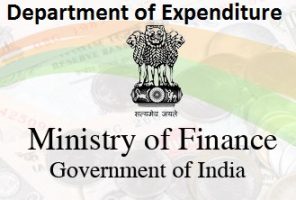
Shri Ashwini Kumar Choubey, Minister of State, Ministry of Environment, Forest & Climate Change HAS INFORMED THAT India has followed a ‘whole of Government’ and ‘whole of society’ approach to COVID-19 and continues to monitor public health response in the country. Government has taken a series of actions to prevent, control and mitigate the impact of COVID-19. Nature, climate and ‘One-Health approach integrating animal, environmental and human health’ is at the core of India’s post COVID-19 recovery and ‘Atma Nirbhar Bharat’ strategy.
As per information received from the Central Pollution Control Board, the water quality monitoring of 19 major rivers showed marginal improvement in river water quality in the country during the lockdown period. There was reduction in organic pollution, increase in saturation of oxygen levels in surface water bodies noticed, whereas, the fecal contamination levels remained same. Similarly, there was temporary improvement of air quality in many cities due to closure of industries, reduction in number of vehicles plying, lack of construction activities and absence of human activities.
Data from Continuous Ambient Air Quality Monitoring Stations (CAAQMS) reveals reduction in average concentrations of PM2.5, PM10, SO2 and NO2 for major cities like Delhi, Faridabad, Gurugram, Ghaziabad, Noida, Mumbai, Kolkata, Bengaluru, Patna and Chennai during the first phase (25th March, 2020 to 19th April, 2020) and second phase of lockdown (20th April, 2020-3rd May, 2020). The improvements are: PM2.5 reduced by 9-70%, PM10 by 20-68%, SO2 by 19-77% and NO2 by 20-87% during the lockdown phases across most of the cities, as compared to average concentration observed in the corresponding period of 2019.
The Government is seized of the matter. As the nodal Ministry within Government of India, the Ministry of Environment, Forest and Climate Change (MoEFCC) ensures synergies and linkages with all concerned Ministries/Departments and State Governments for promoting adoption of ecosystem based approaches as well as management of natural resource endowments of the country. Besides, MoEFCC is implementing different schemes, including National Mission for a Green India (Rs. 361.69 Cr for FY 2022-23), Conservation of Natural Resources and Ecosystems (Rs. 58.50 Cr for FY 2022-23) and Environmental Protection, Management and Sustainable Development (Rs. 142.50 Cr for FY 2022-23). Compensatory Afforestation Fund Management and Planning Authority (CAMPA) has been established which aim to promote afforestation and regeneration activities as a way of compensating for forest land diverted to non-forest uses. National Biodiversity Authority (NBA) was also established in 2003 by the Central Government to implement India’s Biological Diversity Act, 2002. The NBA is a statutory body and performs facilitative, regulatory and advisory function for Government of India on issue of Conservation, sustainable use of biological resource and fair equitable sharing of benefits of use. In response to the COVID-19 outbreak, NBA issued Orders to process the Access and Benefit Sharing applications related to COVID-19 research and manufacture of drugs for the treatment of COVID-19 and disposing the same within five working days.
During COVID Pandemic, Central Pollution Control Board (CPCB) has prepared guidelines for handling, treatment and disposal of waste generated during treatment, diagnostics and quarantine of COVID-19 patients. These guidelines provide comprehensive measures for safe management of COVID-19 related waste. Guidelines have been circulated to concerned Ministries at Central government, State Departments of Health, Urban Development and Environment, State Pollution Control Boards/Pollution Control Committees and Association of Common Biomedical Treatment and Disposal Facilities for their implementation and compliance.
Further, CPCB has developed a mobile application namely COVID19BWM for capturing the data related to COVID-19 biomedical waste generation and treatment which needs to be fed by waste generators and Common Biomedical Waste Treatment Facilities (CBWTFs). Further, during COVID pandemic the biomedical waste generated by the Healthcare Facilities is being treated & disposed off through CBWTFs and captive treatment facilities installed by Healthcare Facilities.







Leave a Reply
You must be logged in to post a comment.